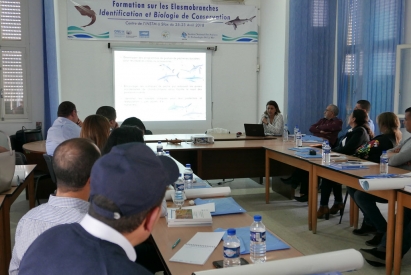Search
04/18: Learn to identify elasmobranchs in order to better conserve them
SPA/RAC organized from 23 to 25 April 2018 in Sfax a training session in collaboration with INSTM and ASCOB-Syrtis on the identification of rays and sharks, a key step for better management of accidental fishing
Elasmobranchs, ie sharks and rays, are the most endangered marine fish class in the Mediterranean. 39 of the 73 species assessed in the Mediterranean are either critically endangered, endangered or vulnerable, according to the IUCN Red List.
One of the main threats to elasmobranchs is incidental capture. Better knowledge of these captures and the concerned species is essential to find out appropriate mitigation measures. The difficulty of identifying shark and rays’ species makes it difficult to collect data while limiting their reliability.
In this context SPA/RAC organized in collaboration with the National Institute of Marine Science and Technology (INSTM) and the Association for Biodiversity Conservation in the Gulf of Gabes (ASCOB-Syrtis) the training session "Identify and recognize rays and Mediterranean sharks", from 23 to 25 April 2018 in Sfax.
Open to teachers, doctoral students and representatives of national institutions concerned with fisheries (CRDA, AVFA, DGPA, APAL, ANPE, INSTM), the training included theoretical and practical training in the laboratory as well as an observation at fish market to identify elasmobranch species at landing and on market stalls.
This action was organized as part of the implementation of the Action Plan for the Conservation of Cartilaginous Fish (Chondrichthyans) in the Mediterranean Sea. It is also a preamble to the field missions that will be carried out within the Bycatch project, and to which some of the training beneficiaries will be directly or indirectly involved in the implementation of the observation programme for data collection on the incidental capture of vulnerable species of turtles, birds and marine mammals as well as cartilaginous fishes.
To see more photos of the training, please visit the SPA/RAC Flick album.




Find Us On...